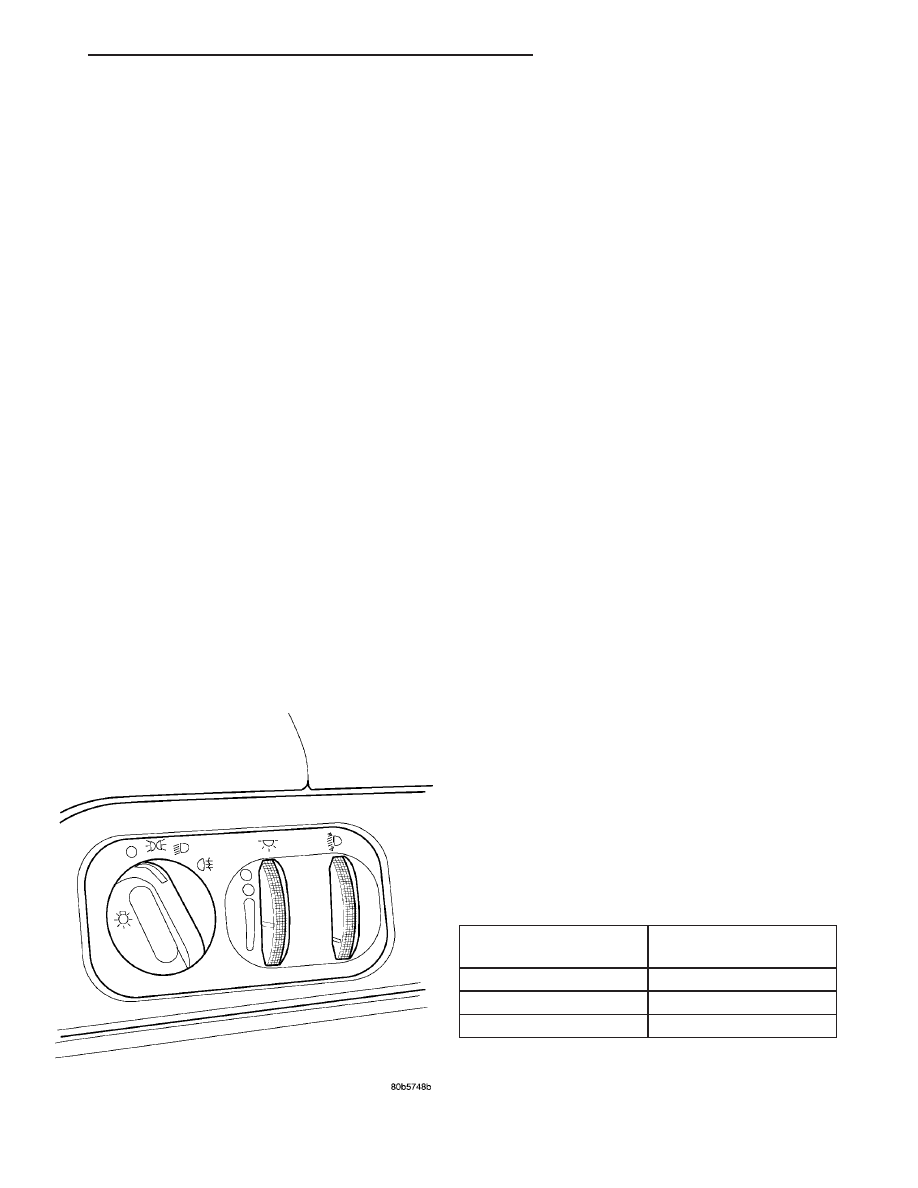Chrysler 300M, Dodge Interpid. Manual - part 89

INSTALLATION
(1) Be certain the replacement motor matches the
configuration of the motor removed.
(2) Line up lugs on new motor with the corre-
sponding openings on the headlamp housing making
sure the ball stud on the motor lines up with ball
stud receptacle on the lamp assembly. The receptacle
can be moved by grasping the rubber boot area of the
outboard lamp and moving by hand. Rotate the
motor back into position to secure in place.
(3) Push down on outboard lamp until leveling
motor ball stud snaps into place. Ensure that the ball
stud is fully seated.
(4) Connect the headlamp leveling motor wire con-
nector.
(5) Install the headlamp assembly on the vehicle
(Refer to 8 - ELECTRICAL/LAMPS/LIGHTING -
EXTERIOR/HEADLAMP UNIT - INSTALLATION).
(6) Verify headlamp leveling motor operation.
(7) Check the headlamps for proper alignment.
Align the headlamps if required (Refer to 8 - ELEC-
TRICAL/LAMPS/LIGHTING
-
EXTERIOR/HEAD-
LAMP UNIT - STANDARD PROCEDURE).
NOTE: Headlamps must be aligned with the head-
lamp leveling switch in the “0” position
HEADLAMP LEVELING
SWITCH - EXPORT
DESCRIPTION
The Headlamp Leveling Switch is located next to
the headlamp switch (Fig. 30) and is the primary
controller of the headlamp leveling system. The lev-
eling switch has three settings 0-2, “0” being the low-
est, “2” being the highest headlight beam vertical
setting.
OPERATION
With the rotation of the headlamp leveling switch
control knob, voltage is adjusted at the headlamp lev-
eling switch (rheostat). This signals the headlamp
leveling
motors
(headlamp
module
mounted)
to
adjust the vertical headlamp beam pattern accord-
ingly. The headlamps must be “ON” in order for the
leveling system to function. Refer to the appropriate
wiring information. The wiring information includes
wiring diagrams, proper wire and connector repair
procedures, details of wire harness routing and
retention, connector pin-out information and location
views for the various wire harness connectors, splices
and grounds.
DIAGNOSIS AND TESTING - HEADLAMP
LEVELING SWITCH - EXPORT
(1) Disconnect and isolate the battery negative
battery cable remote terminal.
(2) Remove the headlamp leveling switch from the
instrument
panel
(Refer
to
8
-
ELECTRICAL/
LAMPS/LIGHTING
-
EXTERIOR/HEADLAMP
SWITCH - REMOVAL).
(3) Disconnect the headlamp leveling switch elec-
trical connector.
(4) Using an Ohm meter and the table below,
check the resistance between the switch connector
pins 1&2.
(5) If the test results are NOT as indicated in the
HEADLAMP LEVELING SWITCH CONTINUITY
table, replace the switch. If the test results ARE as
indicated HEADLAMP LEVELING SWITCH CONTI-
NUITY table, the switch is OK at this time. (Refer to
8 - ELECTRICAL/LAMPS/LIGHTING - EXTERIOR -
DIAGNOSIS AND TESTING).
HEADLAMP LEVELING SWITCH CONTINUITY
SWITCH POSITION
RESISTANCE
BETWEEN PINS 1&2
0
0.752
V
1
0.564
V
2
348.8
V
Fig. 30 HEADLAMP LEVELING SWITCH - EXPORT
LH
LAMPS/LIGHTING - EXTERIOR
8L - 25
HEADLAMP LEVELING MOTOR - EXPORT (Continued)